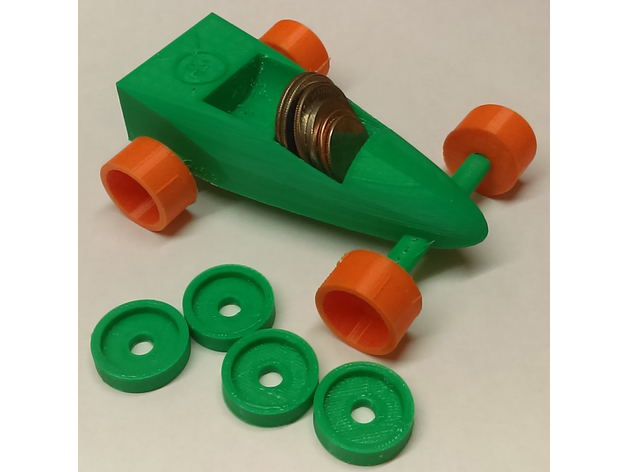
Learning Blade: Variable Car Mission
thingiverse
This is the supporting files for the Learning Blade Variable Car Mission. Students are required to use this derby car in testing dependent variables while calculating the car's velocity (v+d/t). Three independent variables can be tested by students, as outlined below. The base car features four 6 mm wide wheels and no weights. The print files allow students to test how the car's velocity changes when one of the independent variables is altered. Three variables that can be changed on the Variable Car are wheel size, weight of the car, and weight distribution. Standards: NGSS Overview and Background Objective: Understand the concept of independent and dependent variables. This mission can be completed with this Variable Car kit or through having students design their own tires, print, and test them. Description: Students will test how different independent variables change the Variable Car's velocity. Lesson Plan and Activity Show students a completed Variable Car. Have students discuss what could be changed on the Variable car to make it go faster. If the students are going to be engineering their own wheels on TinkerCAD, have a conversation with them about what they think would happen to the car's velocity if the size of the wheels were altered. For those using TinkerCAD, start by having students work on the Variable Car Wheels. Refer to the TinkerCAD Variable Car Guide for instructions. Have students test the variables by changing wheel size or weight. Note: The teacher will need to build a ramp for all students to test their vehicles. Measure the ramp angle to monitor consistency. Discussion Questions Which design was fastest? Was your hypothesis correct? Why or why not? What other variables could you test to see how it impacts average speed? Extensions: Have student groups present their findings after testing. Have students choose a new variable to test based on class results. Have students graph all teams data on one graph. Materials Needed Washers or coins (for weight placement variable) Ramp: Length should be at least 1 meter long Stop Watches or devices with timers.
With this file you will be able to print Learning Blade: Variable Car Mission with your 3D printer. Click on the button and save the file on your computer to work, edit or customize your design. You can also find more 3D designs for printers on Learning Blade: Variable Car Mission.
